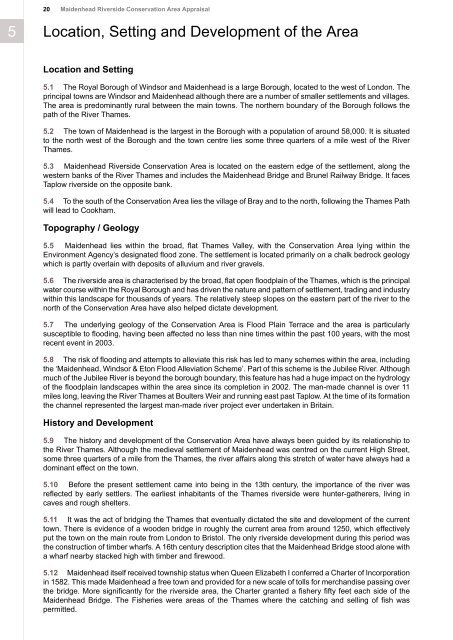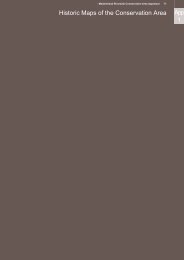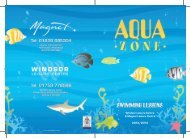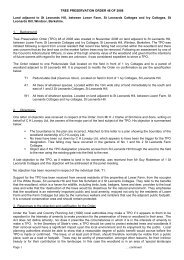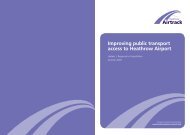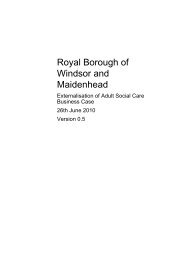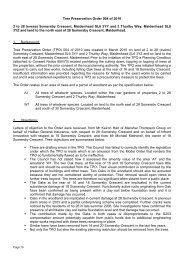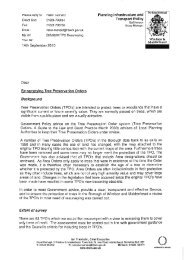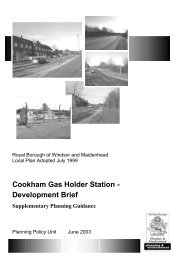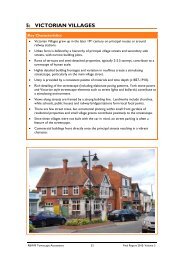Maidenhead Riverside Conservation Area Appraisal - The Royal ...
Maidenhead Riverside Conservation Area Appraisal - The Royal ...
Maidenhead Riverside Conservation Area Appraisal - The Royal ...
- No tags were found...
Create successful ePaper yourself
Turn your PDF publications into a flip-book with our unique Google optimized e-Paper software.
20<br />
<strong>Maidenhead</strong> <strong>Riverside</strong> <strong>Conservation</strong> <strong>Area</strong> <strong>Appraisal</strong><br />
5<br />
Location, Setting and Development of the <strong>Area</strong><br />
Location and Setting<br />
5.1 <strong>The</strong> <strong>Royal</strong> Borough of Windsor and <strong>Maidenhead</strong> is a large Borough, located to the west of London. <strong>The</strong><br />
principal towns are Windsor and <strong>Maidenhead</strong> although there are a number of smaller settlements and villages.<br />
<strong>The</strong> area is predominantly rural between the main towns. <strong>The</strong> northern boundary of the Borough follows the<br />
path of the River Thames.<br />
5.2 <strong>The</strong> town of <strong>Maidenhead</strong> is the largest in the Borough with a population of around 58,000. It is situated<br />
to the north west of the Borough and the town centre lies some three quarters of a mile west of the River<br />
Thames.<br />
5.3 <strong>Maidenhead</strong> <strong>Riverside</strong> <strong>Conservation</strong> <strong>Area</strong> is located on the eastern edge of the settlement, along the<br />
western banks of the River Thames and includes the <strong>Maidenhead</strong> Bridge and Brunel Railway Bridge. It faces<br />
Taplow riverside on the opposite bank.<br />
5.4 To the south of the <strong>Conservation</strong> <strong>Area</strong> lies the village of Bray and to the north, following the Thames Path<br />
will lead to Cookham.<br />
Topography / Geology<br />
5.5 <strong>Maidenhead</strong> lies within the broad, flat Thames Valley, with the <strong>Conservation</strong> <strong>Area</strong> lying within the<br />
Environment Agency’s designated flood zone. <strong>The</strong> settlement is located primarily on a chalk bedrock geology<br />
which is partly overlain with deposits of alluvium and river gravels.<br />
5.6 <strong>The</strong> riverside area is characterised by the broad, flat open floodplain of the Thames, which is the principal<br />
water course within the <strong>Royal</strong> Borough and has driven the nature and pattern of settlement, trading and industry<br />
within this landscape for thousands of years. <strong>The</strong> relatively steep slopes on the eastern part of the river to the<br />
north of the <strong>Conservation</strong> <strong>Area</strong> have also helped dictate development.<br />
5.7 <strong>The</strong> underlying geology of the <strong>Conservation</strong> <strong>Area</strong> is Flood Plain Terrace and the area is particularly<br />
susceptible to flooding, having been affected no less than nine times within the past 100 years, with the most<br />
recent event in 2003.<br />
5.8 <strong>The</strong> risk of flooding and attempts to alleviate this risk has led to many schemes within the area, including<br />
the ‘<strong>Maidenhead</strong>, Windsor & Eton Flood Alleviation Scheme’. Part of this scheme is the Jubilee River. Although<br />
much of the Jubilee River is beyond the borough boundary, this feature has had a huge impact on the hydrology<br />
of the floodplain landscapes within the area since its completion in 2002. <strong>The</strong> man-made channel is over 11<br />
miles long, leaving the River Thames at Boulters Weir and running east past Taplow. At the time of its formation<br />
the channel represented the largest man-made river project ever undertaken in Britain.<br />
History and Development<br />
5.9 <strong>The</strong> history and development of the <strong>Conservation</strong> <strong>Area</strong> have always been guided by its relationship to<br />
the River Thames. Although the medieval settlement of <strong>Maidenhead</strong> was centred on the current High Street,<br />
some three quarters of a mile from the Thames, the river affairs along this stretch of water have always had a<br />
dominant effect on the town.<br />
5.10 Before the present settlement came into being in the 13th century, the importance of the river was<br />
reflected by early settlers. <strong>The</strong> earliest inhabitants of the Thames riverside were hunter-gatherers, living in<br />
caves and rough shelters.<br />
5.11 It was the act of bridging the Thames that eventually dictated the site and development of the current<br />
town. <strong>The</strong>re is evidence of a wooden bridge in roughly the current area from around 1250, which effectively<br />
put the town on the main route from London to Bristol. <strong>The</strong> only riverside development during this period was<br />
the construction of timber wharfs. A 16th century description cites that the <strong>Maidenhead</strong> Bridge stood alone with<br />
a wharf nearby stacked high with timber and firewood.<br />
5.12 <strong>Maidenhead</strong> itself received township status when Queen Elizabeth I conferred a Charter of Incorporation<br />
in 1582. This made <strong>Maidenhead</strong> a free town and provided for a new scale of tolls for merchandise passing over<br />
the bridge. More significantly for the riverside area, the Charter granted a fishery fifty feet each side of the<br />
<strong>Maidenhead</strong> Bridge. <strong>The</strong> Fisheries were areas of the Thames where the catching and selling of fish was<br />
permitted.


